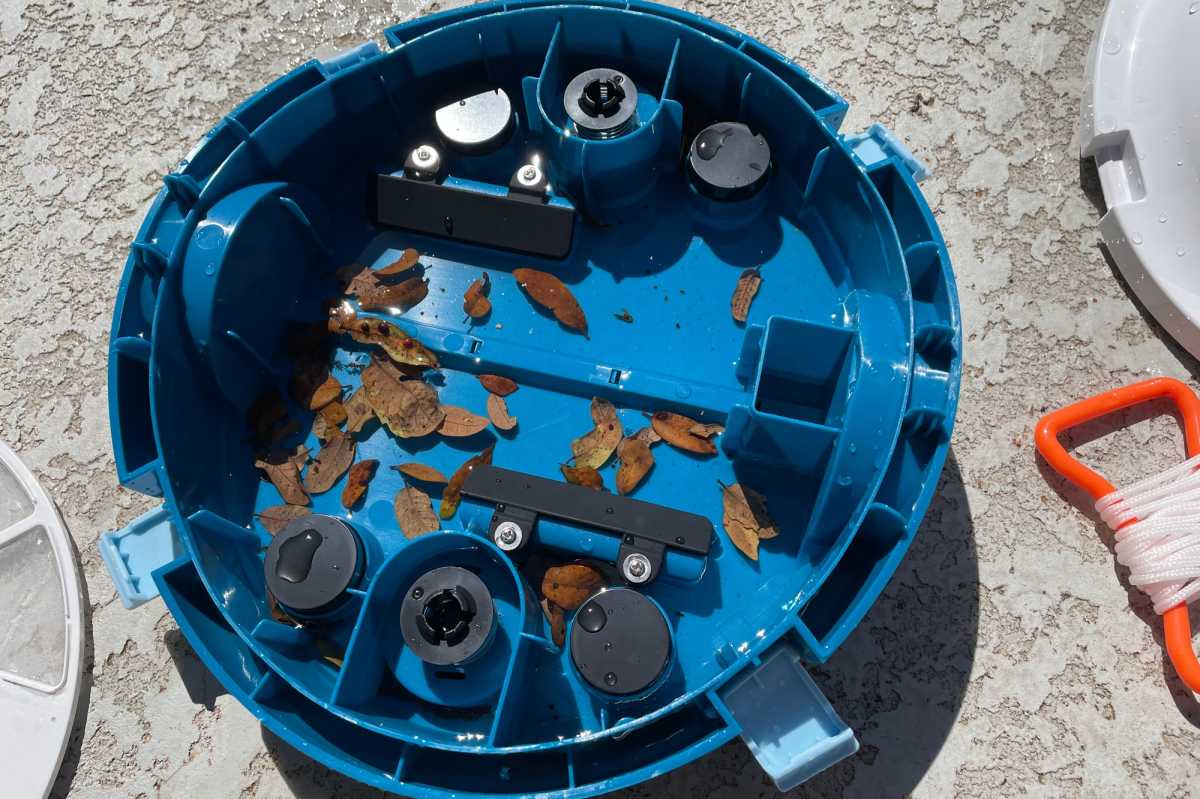Expert’s Rating
Pros
- Relatively inexpensive
- Small children and pets might find it fun to watch
Cons
- Simply doesn’t pick up debris to any degree of capability
- Drains very slowly, making it awkward to retrieve
- Not overly attractive
Our Verdict
This speedy little robot looks the part, but you can pick up more leaves in 60 seconds with a net than the Y10 can retrieve in more than an hour.
Best Prices Today: Inse Y10 Cordless Pool Vacuum Robot

$279.99
Inse makes a variety of vacuuming products, and the Y10 marks the company’s first foray into underwater territory. Inse’s Y10 is one of the smallest robotic pool cleaners I’ve encountered, shaped like a bloated saucer on wheels, measuring just 12 inches across and weighing less than 7 pounds. The color scheme in white, baby blue, and black seems a little haphazard—and not altogether attractive—but pool robots seldom seem to be designed with aesthetics much in mind.
Specs all seem reasonable even given the diminutive size of the robot: A 5200 mAh battery powers the device for a promised 90 minutes, which gives it enough juice to cover an area of 1,100 square feet. The Y10 charges via a standard A/C outlet; its input can be found under a rubberized seal on the top of the device, which makes it easy to access. A single power button is also located here, the only control option on the robot.
To date the Inse Y10 is the cheapest cleaner I’ve tested.
While devices like those made by Aiper include a hook that you use to retrieve the robot, Inse opts instead for a floater which is attached to a thin, 11-foot-long string that you tie to the handle of the Y10. Instead of fishing the device from the bottom of the pool, you need only reach the bobbing floater with a standard net, which makes it admittedly easier to reach, though pulling up the waterlogged Y10 from the bottom of the pool with the string can be awkward.

My pool was loaded with leaves, but the Inse Y10 never manged to suck up more than this paltry amount of debris.
Christopher Null/Foundry
After spending a solid 6 hours charging the Y10, I set it loose on my invariably leaf-covered pool to get to work. It’s a fast little robot, using opposing water jets to zoom back and forth across the bottom. And it really kicks debris around, with leaves flying every which way as it rumbles across them. But even from the surface I could tell not many of the leaves were actually being vacuumed up, they were just being scattered in different directions.
After just shy of an hour and a half, I retrieved the robot—which had come to a rest not near the wall, as was promised, but close to the center of the pool—and waited interminably as the water slowly drained out, making retrieval even more awkward and time-consuming. Popping the device open, I wasn’t surprised to find a paltry handful of leaves inside its 2-liter storage container.
Sure, disassembling the Y10 is easier than the Seagull SE, thanks to four easy-to-operate clips that affix the motor to the base, but considering there was so little debris inside to clear out, it hardly seemed worth the effort. Multiple rounds and even attempts at guiding the unit directly into the path of leaves with a pole had no impact on its inability to clean the pool.
Inse positions the $300 ($220 street) device as a bargain within the generally costly pool-cleaning robot world, and to date it’s the cheapest pool cleaner I’ve tested. Sure enough, you get what you pay for here. Spend an extra $30 for the much more effective Aiper Seagull SE and let Inse head back to the drawing board.




